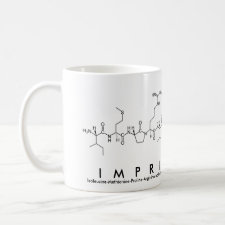Authors: Zhang J, Ou XJ, Li L, Chen QQ, Zhang ZF, Huo T, Lin XY, Niu FF, Zhao SY, We F, Li H, Liu CL, Chen ZB, Lu SJ, Zhang P, Zhu JN
Article Title: Preparation and selectivity evaluation of grafted temperature-responsive imprinted composite polyvinylidene fluoride resin membranes for selective adsorption of ReO.
Publication date: 2021
Journal: Pigment & Resin Technology
DOI: 10.1108/PRT-07-2021-0082
Abstract: Purpose A novel grafted temperature-responsive ReO4- Imprinted composite membranes (Re-ICMs) was successfully prepared by using polyvinylidene fluoride (PVDF) resin membranes as substrates, this study aimed to separate and purify ReO effectively. Design/methodology/approach Re-ICMs were synthesized by PVDF resin membranes as the substrate, acrylic acid (AA), acrylamide (AM), ethylene glycol dimethacrylate (EGDMA) were functional monomers. The morphology and structure of Re-ICMs were characterized by scanning electron microscope and Fourier transform infrared spectroscopy. Findings The maximum adsorption capacity toward ReO4- was 0.1,163 mmol/g and the separation decree had relation to MnO4- was 19.3. The optimal operation conditions were studied detailedly and the results as follows: the molar ratios of AA, AM, EGDMA, ascorbic acid, NH4ReO4, were 0.8, 0.96, 0.02, 0.003 and 0.006. The optimal time and temperature were 20 h and 40℃ , respectively. The Langmuir and pseudo-second-order models were fit these adsorption characteristics well. Practical implications Rhenium (Re) is mainly used to chemical petroleum and make superalloys for jet engine parts. This study was representing a technology in separate and purify of Re, which provided a method for the development of the petroleum and aviation industry. Originality/value This contribution provided a novel method to separate ReO4- from MnO4-. The maximum adsorption capacity was 0.1163 mmol/g at 35℃ and the adsorption equilibrium time was within 2 h. Meanwhile, the adsorption selectivity rate ReO4-/MnO4- was 19.3 and the desorption rate was 78.3%. Controlling the adsorption experiment at 35℃ and desorption experiment at 25℃ in aqueous solution, it could remain 61.3% of the initial adsorption capacity with the adsorption selectivity rate of 13.3 by 10 adsorption/desorption cycles, a slight decrease, varied from 78.3% to 65.3%, in desorption rate was observed



Join the Society for Molecular Imprinting

New items RSS feed
Sign-up for e-mail updates:
Choose between receiving an occasional newsletter or more frequent e-mail alerts.
Click here to go to the sign-up page.
Is your name elemental or peptidic? Enter your name and find out by clicking either of the buttons below!
Other products you may like:
 MIPdatabase
MIPdatabase









